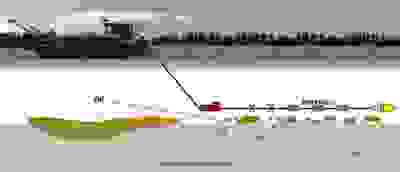IP techniques examine the surface-sensitive physical property of certain polarizable materials immersed in an electrolyte (water) that can accept and adsorb charge under an inducing voltage. Known polarizable materials include most sulfides, metallic objects such as buried wrecks and pipelines, ilmenite (FeTiO3), and now hydrocarbons.
Under an induced voltage, charge adsorbs onto certain mineral particles. When the induced voltage is removed, the charge decays. This reaction is measured as a phase shift between transmitted and received signals. The electrical frequency at which maximum phase shift occurs is diagnostic of the specific material being polarized.

